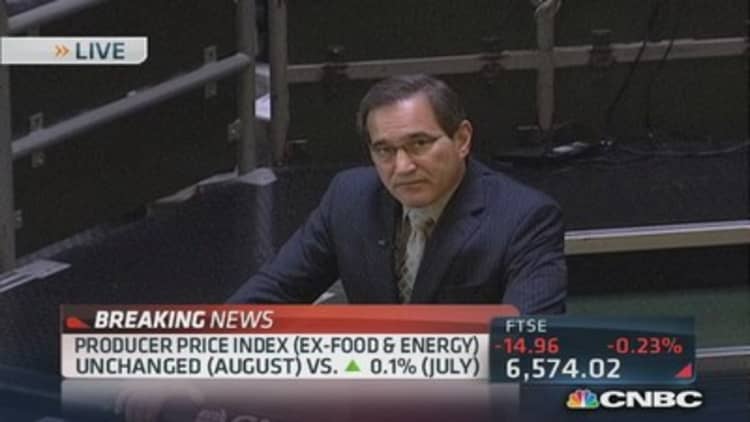U.S. retail sales rose less than expected in August even as demand increased for automobiles and other big-ticket items, the latest sign that economic growth slowed in the third quarter.
The Commerce Department said on Friday retail sales increased 0.2 percent last month as Americans bought automobiles, furniture and electronics and appliances.

However, they cut back on clothing, building materials and sporting goods.
Retail sales, which account for about 30 percent of consumer spending, were still up for a fifth consecutive month.
They had gained 0.4 percent in July and economists polled by Reuters had expected them to rise 0.4 percent last month.
Stripping out automobiles, gasoline and building materials, so-called core sales were up 0.2 percent after rising 0.5 percent in July. Core sales correspond most closely with the consumer spending component of gross domestic product.
Though core sales slowed a bit from July, they matched the second quarter's 0.2 percent average monthly gain.
Despite the signs of a slowdown in demand this quarter, that will not change expectations the Federal Reserve will announce cutbacks to its huge monthly bond purchasing program at next Tuesday and Wednesday's policy meeting.
The retail sales report added to July data on consumer spending, industrial production, housing starts and durable goods orders that have suggested growth took a step back from the first quarter's 2.5 percent annual pace.
Sales at auto dealerships rebounded 0.9 percent last month after falling 0.5 percent in July. Excluding autos, sales nudged up 0.1 percent after rising 0.6 percent the prior month.
Sales at building materials and garden equipment suppliers fell 0.9 percent. Clothing store receipts declined 0.8 percent, the biggest fall in nearly 1-1/2 years, reflecting weak back-to- school sales. That may not be a good sign for the holiday season.
Prices creep up, yet inflation stays under control

In a separate report, the Labor Department reported U.S. producer prices rose in August as energy costs rebounded, but underlying inflation remained tame.
The seasonally adjusted producer price index increased 0.3 percent last month. Wholesale prices had been flat in July.
A Reuters survey of economists had forecast prices received by the nation's farms, factories and refineries rising 0.2 percent in August.
In the 12 months through August, wholesale prices rose 1.4 percent after advancing 2.1 percent in July. August's increase was the smallest since April.
Wholesale prices excluding volatile food and energy costs were unchanged after rising for nine straight months. In the 12 months through August, the so-called core PPI increased 1.1 percent after rising 1.2 percent in July.
August's increase was the smallest since June 2010.
Although price pressures remain benign against the backdrop of a sluggish jobs market, that is unlikely to stop the Federal Reserve from reducing the $85 billion in Treasury and mortgage bonds it is buying each month to keep interest rates low.
Inflation is expected to gradually rise as the economy regains some momentum. Economists expect an announcement on the future of the program could come at the end of next Tuesday and Wednesday's policy meeting.
In August, wholesale gasoline prices bounced back by 2.6 percent from a 0.8 percent drop the prior month. That helped to push up overall energy prices, which rose 0.8 percent.
Energy, which had dropped 0.2 percent in July, accounted for nearly two-third of the increase in wholesale prices last month.
Producer prices were also lifted by a 0.6 percent gain in food prices. Food prices were boosted by jumps in the cost of processed poultry, fresh and dry vegetables, as well as soft drinks.
Away from food and gasoline, passenger car prices fell 0.5 percent, while light truck prices dropped 0.3 percent. The two make up about 20 percent of the core PPI.

